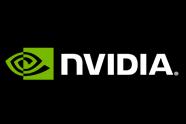Is Nvidia vulnerable to takeover?
Our occasional series continues, as we consider Nvidia and whether it’s a likely takeover candidate in the months ahead…

Right here, right now, Nvidia is sitting pretty. Its latest round of GeForce desktop graphics products are winning benchmark tests in specialist publications right around the globe. Its SLI dual graphics card factor is significantly more popular than its rival's Crossfire equivalent. Its discrete graphics card business is thriving, and it's also got its graphics technology sitting inside the Playstation 3 which, while not doing the numbers expected of it right now, is expected to pick up speed over the coming year.
Nvidia is also one of the more intriguing subjects of our occasional Vulnerable To Takeover series - we've also looked at AMD, MySpace, Facebook and Yahoo.
Unlike the companies we've discussed before, there's no impending cash crisis, or a particular moment of opportunity to seize. Nor is there large amounts of rampant speculation. But that still doesn't disguise the fact that Nvidia has been talked about as a possible takeover target for well over a year now, even if questions abound surrounding whether there's any fire under the smoke.
The reason for the speculation? AMD.
Back in 2006, when AMD swooped for ATI, it created a powerhouse company that was primed to make full use of the mix of the processing and graphical technologies, along with bountiful expertise in both areas, on the asset register. The idea was that AMD's skill in processors and motherboards could be matched by ATI's graphical and chipset work, and the combined result would be a driving force in the sector. Not for nothing was the likes of Nvidia concerned, and not for nothing was a deal between it and Intel mooted.
Of course, things haven't quite gone to plan.
It's fair to say that AMD is still dealing with the challenges of merging two such demanding technological firms into one, and even now the road maps that are emerging show that real results of the union are still some way off (the Fusion technology, the major crossover between graphics and CPU technology on one die, won't be seeing the light of day until 2009). But nonetheless, it's the mere potential that a unified AMD and ATI posesses that continues to loom as a threat over the market, and helps generate an ongoing amount of tittle-tattle.
Sign up today and you will receive a free copy of our Future Focus 2025 report - the leading guidance on AI, cybersecurity and other IT challenges as per 700+ senior executives
And let's face it: the sector in which Nvidia operates isn't awash with other competitiors. The likes of VIA and Matrox snare small amounts of market share each, but when it comes to graphics, it's a three way split between Nvidia, AMD and Intel. Most commonly, Nvidia is compared to AMD, against whom it's made market share gains over the past year. However, perhaps the real threat in the short and longer terms is Intel. And that's the name we'll be coming back to shortly.
Success
Nvidia's performance, however, is nonetheless a real technological success story, and that simply cannot be overlooked. Early in May, it posted first quarter profits of $176.8 million (89 million), and that was against revenues of $1.15 billion - in the same period, AMD lost $358 million, and still had over $5 billion of debt to clear. These results represent a 37 per cent year-over-year increase in revenue.
To please its shareholders still further, Nvidia promptly declared that it expects further growth in the quarter ahead. Clearly, the surge in sales of particularly notebook computers and portable devices was a major contributory element here.
You can't help, though, but factor Nvidia's growing profits against the struggles at AMD, where saddled with that oft-reported sizeable debt the firm is struggling to move out of the red. What's more, that situation shows little signs of improving for it, leading to ongoing worries about its future.
But then we come back to the Intel factor, and here is where the toughest competition right now perhaps lies. Intel's market share, according to figures from US-based Jon Peddie Research, sits at 33.5 per cent in the desktop sector, and 50.9 per cent in the mobile market. Converesly, Nvidia ratchets up 37.8 per cent in the former, and 22.8 per cent in the latter, where it also just about trails AMD.
Sure, Nvidia is growing, and it's got the clout to out-muscle AMD, but Intel replete with an immense bank of resource to call on - is another matter entirely.

